Toothache remedy: Clove oil
Cloves are a traditional remedy for numbing nerves; the primary chemical compound of this spice is eugenol, a natural anesthetic. Research has shown that, used topically, clove oil can be as effective against tooth pain as benzocaine. Put two drops of clove oil on a cotton ball and place it against the tooth itself until the pain recedes. In a pinch, use a bit of powdered clove or place a whole clove on the tooth. Chew the whole clove a little to release its oil and keep it in place up to half an hour or until the pain subsides. Don’t miss these signs that you might be headed for a dental emergency.
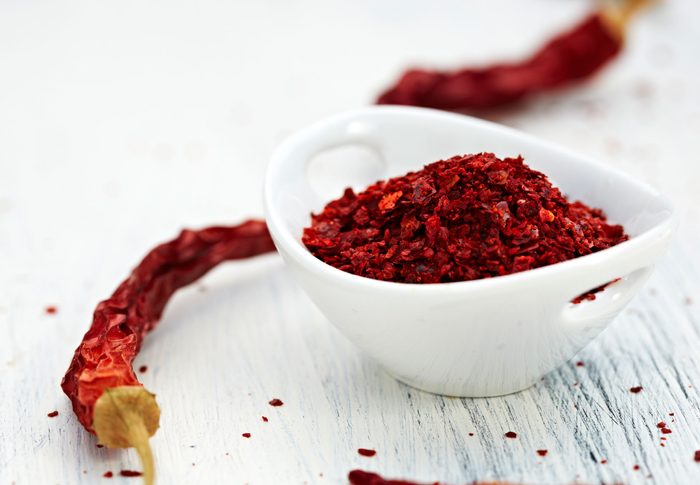
Toothache remedy: Cayenne paste
The main chemical component of cayenne—capsaicin—has been found to alter some of the mechanisms involved in pain. Mix powdered cayenne with enough water to make a paste. Roll a small ball of cotton into enough paste to saturate it, then place it on your tooth while avoiding your gums and tongue. Leave it until the pain fades—or as long as you can stand it (the concoction is likely to burn).
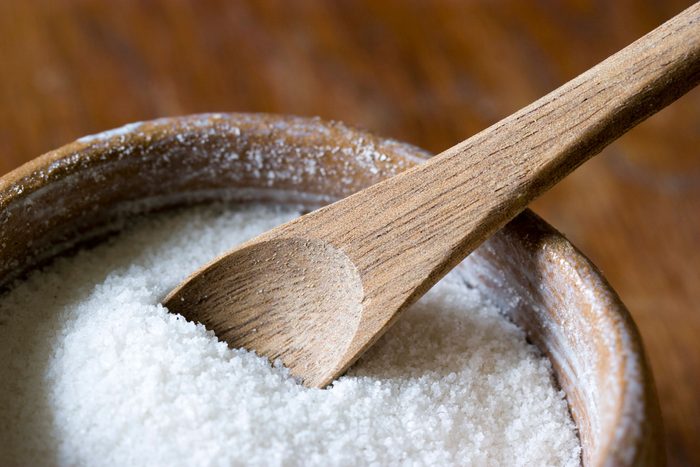
Toothache remedy: Swish some salt water
A teaspoon of salt dissolved in a cup of boiling water makes an effective mouthwash, which will clean away irritating debris and help reduce swelling. Swish it around for about 30 seconds before spitting it out. Saltwater cleanses the area around the tooth and draws out some of the fluid that causes swelling, according to Thomas Salinas, a professor of dentistry at the Mayo Clinic, Rochester, MN. Repeat this treatment as often as needed. “A hot rinse can also help consolidate the infection until you get to your dentist,” says Dr. Salinas. Visit the dentist if you notice these cavity symptoms you definitely shouldn’t ignore.

Toothache remedy: Soothe with tea
Peppermint tea has a nice flavor and some medicinal powers as well. Put 1 teaspoon dried peppermint leaves in 1 cup boiling water and steep for 20 minutes. After the tea cools, swish it around in your mouth, then spit it out or swallow. Also, the astringent tannins in strong black tea may help quell pain by reducing swelling. For this folk remedy place a warm, wet tea bag against the affected tooth for temporary relief. “The fluoride in tea can help kill bacteria, which is especially helpful after a tooth extraction,” says Salinas.
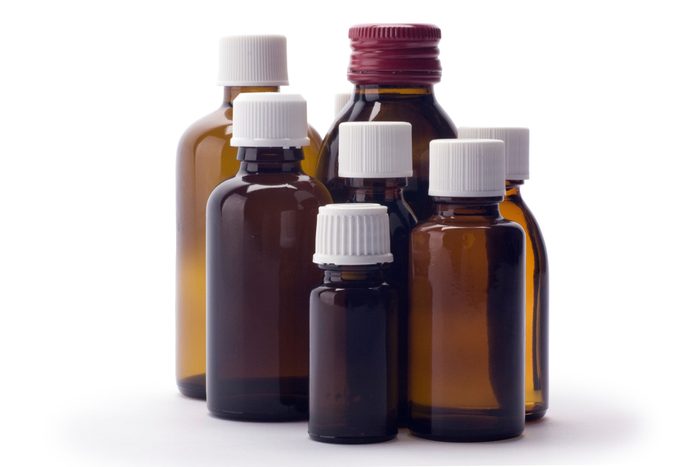
Toothache remedy: Rinse with hydrogen peroxide
To help kill bacteria and relieve some discomfort, swish with a mouthful of 3% hydrogen peroxide solution diluted with water. This can provide temporary relief if a toothache is accompanied by fever and a foul taste in the mouth (both are signs of infection), but like other toothache remedies, it’s only a stopgap measure until you see your dentist and get the source of infection cleared up. A hydrogen peroxide solution is only for rinsing. Spit it out, then rinse several times with plain water.

Toothache remedy: Ice it
Place a small ice cube in a plastic bag, wrap a thin cloth around the bag, and apply it to the aching tooth for about 15 minutes to numb the nerves. Alternatively, that ice pack can go on your cheek, over the painful tooth. Also, according to folklore, if you massage your hand with an ice cube, you can help relieve a toothache. When nerves in your fingers send “cold” signals to your brain, they may distract from the pain in your tooth. Just wrap up an ice cube in a thin cloth and massage it in the fleshy area between your thumb and forefinger. These are 8 rules you should follow if you have sensitive teeth.
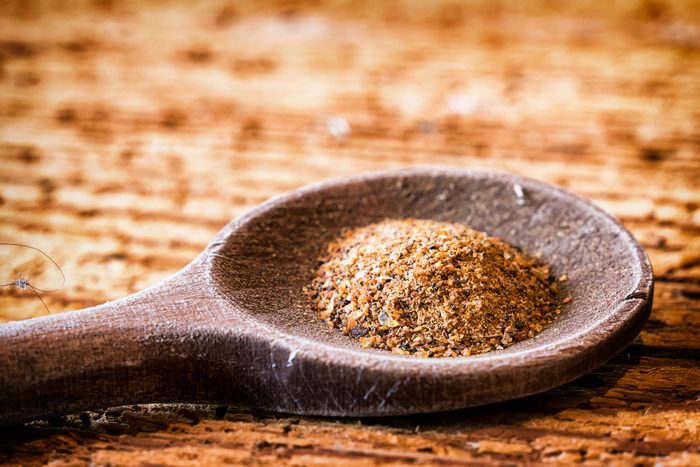
Toothache remedy: Wash it with myrrh
You can also rinse with a tincture of myrrh. “Myrrh definitely has an effect on infected tissue and can sometimes also interfere with the pain generated by tooth infection,” says Salinas. Simmer 1 teaspoon of powdered myrrh in 2 cups water for 30 minutes. Strain and let cool. Rinse with 1 teaspoon of the solution in a half-cup water several times a day. Don’t miss these other 37 secrets your dentist will never tell you.

Toothache remedy: Distract with vinegar and brown paper
Another country cure calls for soaking a small piece of brown paper (from a grocery or lunch bag) in vinegar, sprinkling one side with black pepper, and holding this to the cheek. The warm sensation on your cheek may distract you from your tooth pain. This technique is an example of the Gate Control theory of pain. By using a distracting stimulus, the “gates” to the pain receptors in your brain close and you don’t feel the original pain as powerfully.
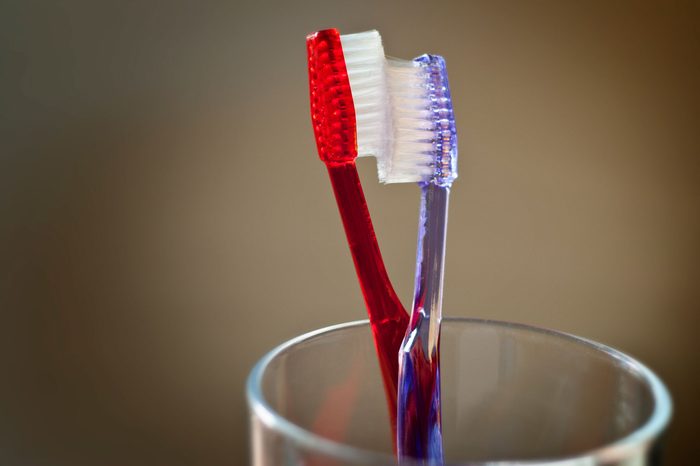
Toothache remedy: Brush with the right tools
“Sensitive toothpaste is very helpful for people with significant gum recession,” says Salinas. When gums shrink, the dentin beneath your teeth’s enamel surface is exposed, and this material is particularly sensitive. Look for pastes that contain sodium fluoride, potassium nitrate or strontium nitrate–ingredients which have been shown to reduce sensitivity, according to Salinas. Switch to the softest-bristled brush you can find to help preserve gum tissue and prevent further shrinking. These are the best electric toothbrushes you can use, according to dentists.
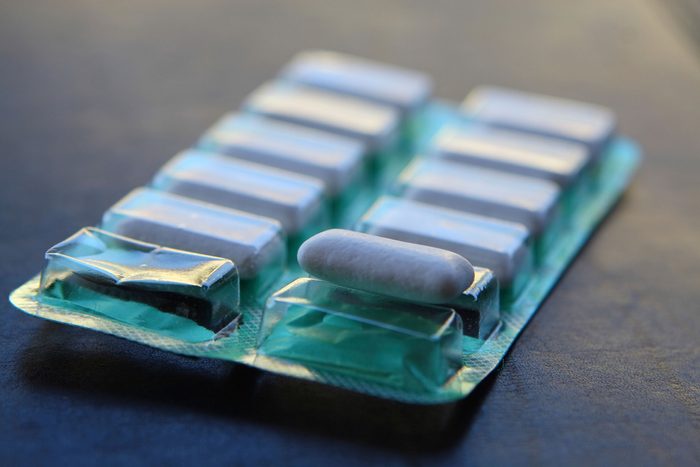
Toothache remedy: Cover a crack with gum
If you’ve broken a tooth or have lost a filling, you can relieve some pain by covering the exposed area with softened chewing gum. This might work with a loose filling, too, to hold it in place until you can get to the dentist. To avoid further discomfort, avoid chewing anything with that tooth until you can have it repaired. Just make sure you use sugarless gum, since sugar may actually exacerbate the pain (not to mention that it can cause cavities). Here’s why you might have tooth sensitivity after a filling, and when to reach out to your dentist about it.

Toothache remedy: Apply pressure
Try an acupressure technique to stop tooth pain fast. With your thumb, press the point on the back of your other hand where the base of your thumb and your index finger meet. Apply pressure for about two minutes. “This works in several ways,” says Salinas. “The pressure can help prevent pain signals from being sent as well as help express some of the fluid that causes swelling.” Next, find out how to avoid these 30 everyday mistakes that can ruin your teeth.